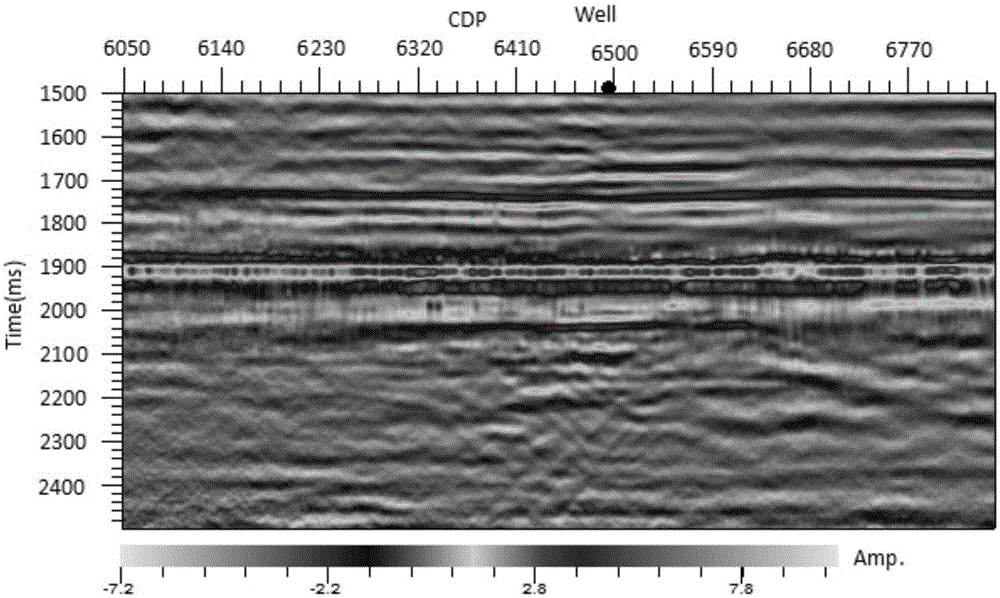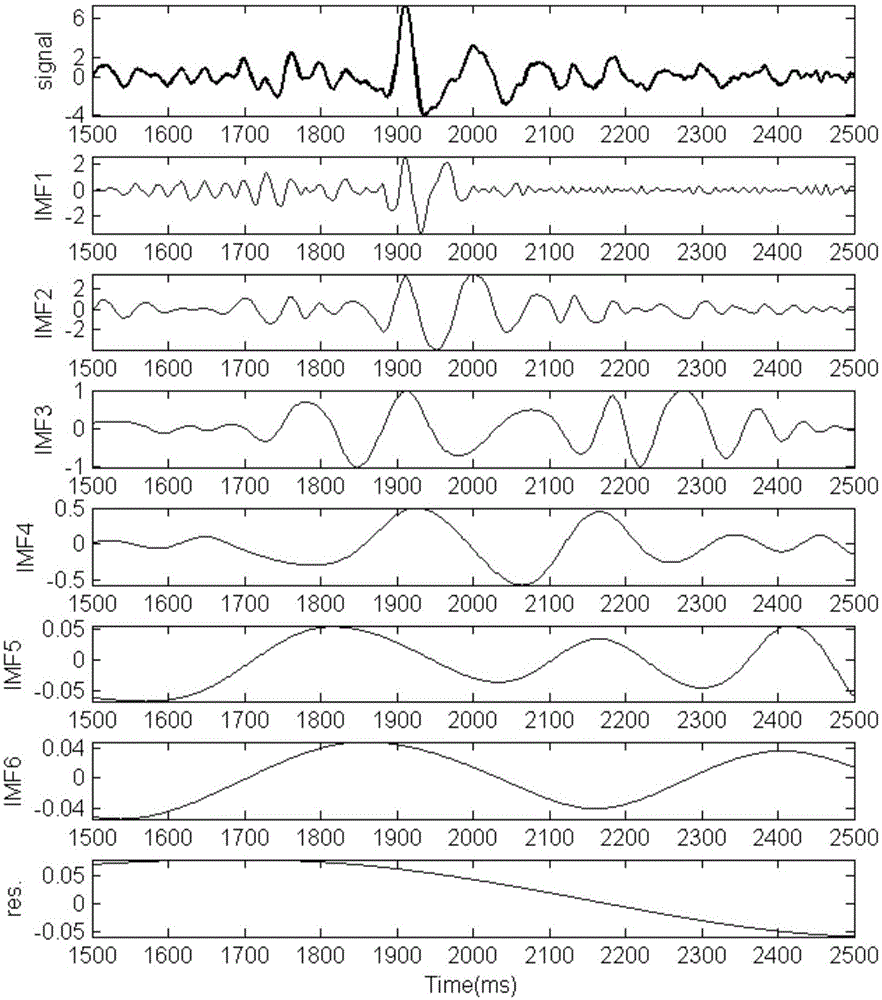Method of detecting elimination of seismic marked layer strong reflection amplitude based on empirical mode decomposition
An empirical mode decomposition and marker layer technology, applied in the field of petroleum geophysical exploration, can solve problems such as distortion, failure to reflect the real situation of underground media, and low calculation efficiency, and achieve instantaneous property enhancement, enhanced oil and gas response characteristics, and fast calculation speed Effect
- Summary
- Abstract
- Description
- Claims
- Application Information
AI Technical Summary
Problems solved by technology
Method used
Image
Examples
Embodiment 1
[0032] This embodiment provides a method for eliminating strong reflection amplitudes of seismic marker layers based on empirical mode decomposition detection, including the following steps:
[0033] 1) Carry out empirical mode decomposition on the original seismic trace signal one by one, and decompose each original seismic trace signal to obtain a series of intrinsic mode functions IMF from high frequency to low frequency to trend item;
[0034] Empirical Mode Decomposition (EMD) is to decompose the original seismic trace signal into a series of intrinsic mode function IMF components, that is, the original seismic trace signal X(t)=C 1 (t)+C 2 (t)+...+C n (t)+R n (t)); where C i (t) is the i-th IMF component, i=1~n, R n (t) is the margin.
[0035] 2) For a single original seismic trace signal, use the maximum correlation method to select the main IMF components embodied in coal seams and source rocks, and calculate the correlation coefficient between each IMF component ...
Embodiment 2
[0045] On the basis of Example 1, this example takes the processing of a two-dimensional post-stack migration seismic section in the Sulige area of the Ordos Basin as an example. This area is a tight sandstone reservoir.
[0046] figure 1 It is a two-dimensional post-stack migration original seismic profile in the Sulige area; firstly, the IMF signal is generated by the well-passed seismic trace and its EMD decomposition, such as image 3 Shown; Then analyze the correlation between the IMF signal and the original well-passing seismic signal after the EMD decomposition of the well-passing seismic trace, the results are as shown in table 1, and then obtain each IMF signal and the final reconstruction after utilizing the method of the present invention to process The seismic channel signal, such as Figure 4 shown. and figure 2 It is the seismic section figure processed by the method technology of the present invention. Table 1:
[0047]
[0048] Figure 5 is the inst...
PUM
 Login to View More
Login to View More Abstract
Description
Claims
Application Information
 Login to View More
Login to View More - R&D
- Intellectual Property
- Life Sciences
- Materials
- Tech Scout
- Unparalleled Data Quality
- Higher Quality Content
- 60% Fewer Hallucinations
Browse by: Latest US Patents, China's latest patents, Technical Efficacy Thesaurus, Application Domain, Technology Topic, Popular Technical Reports.
© 2025 PatSnap. All rights reserved.Legal|Privacy policy|Modern Slavery Act Transparency Statement|Sitemap|About US| Contact US: help@patsnap.com



